Write for your target audience
When writing product descriptions, you should be speaking directly to your target buyer. Avoid the temptation to generalize in order to attract more customers. See this example from Modcloth:
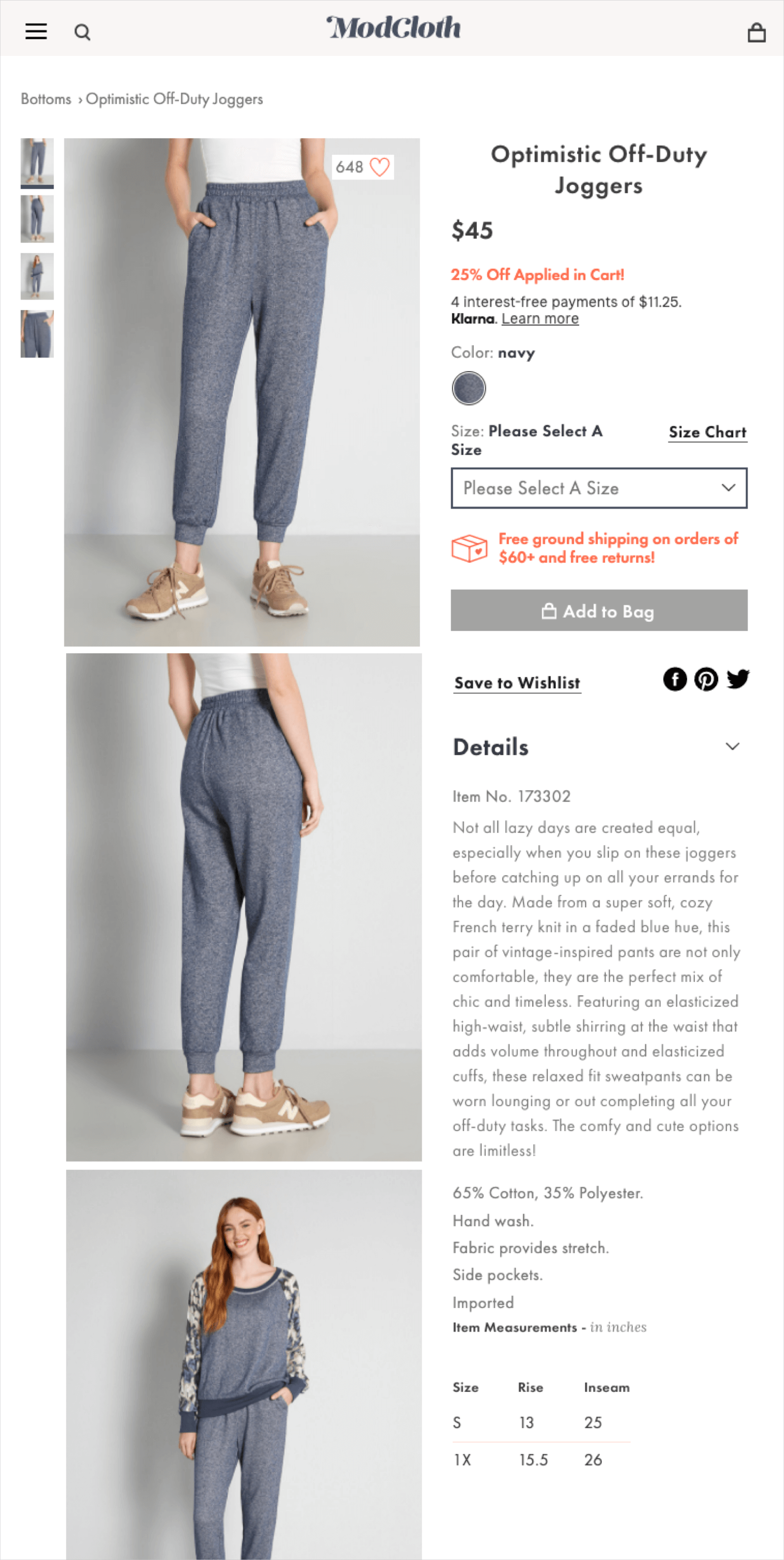
Modcloth is a company that writes for their target audience well. In this product description, they are offering relatable scenarios in which a customer may want to wear these pants and incorporating product attributes that consumers come to their store in search of, like “cute” and “vintage-inspired.”
Using words like “you” and “your” in your product descriptions is a powerful way to make your products and your brand more accessible, and help you turn transactions into customer relationships. And presenting them with real-world ways to incorporate your products into their lives will help them to imagine themselves using it.
Highlight your product benefits
A lot of brands make the mistake of focusing on the features of their products, without explaining how those features will benefit the customer. Adding that extra layer of messaging can go a long way toward persuading a consumer to purchase from your store. See this example from Paula’s Choice:
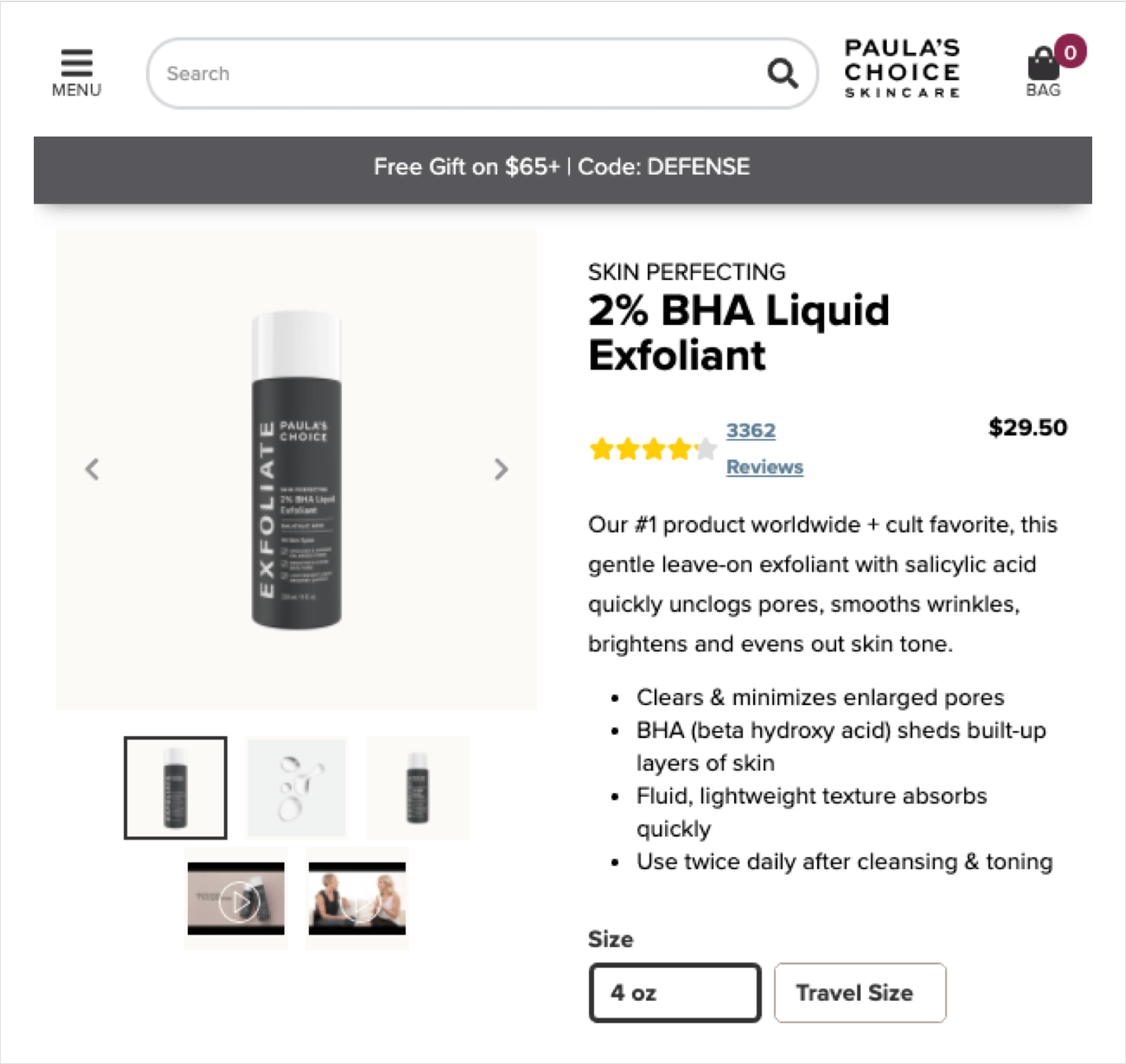
This description doesn’t just tell you what it is and what’s in it; it tells you exactly how it will benefit your skin.
If you have any of the concerns that the product addresses, you know right away that it’s something you should consider. If you have sensitive skin, you know that this product is gentle, which means it isn’t as likely to irritate your skin as similar products. If you are in the age range where anti-aging products appeal to you, you know that this product has those benefits. And, you know that it’s a popular product with other consumers like you.
It’s not a long description, but it gives you a lot of useful information. You don’t have to write long, flowery descriptions to convince consumers to buy your product. You just have to show them how it will benefit them.
Use a consistent, friendly tone to reassure new shoppers
Imagine someone is coming to your store for the first time. Whether they land on the home page or, more likely, on a product page, the voice should be consistent and welcoming.
There isn’t one particular “voice” that every brand should use. Some are edgy, some use humor, and some are sentimental. But no matter how you connect with consumers, it needs to be done in a friendly way, and in a natural speaking voice. See this example from method:
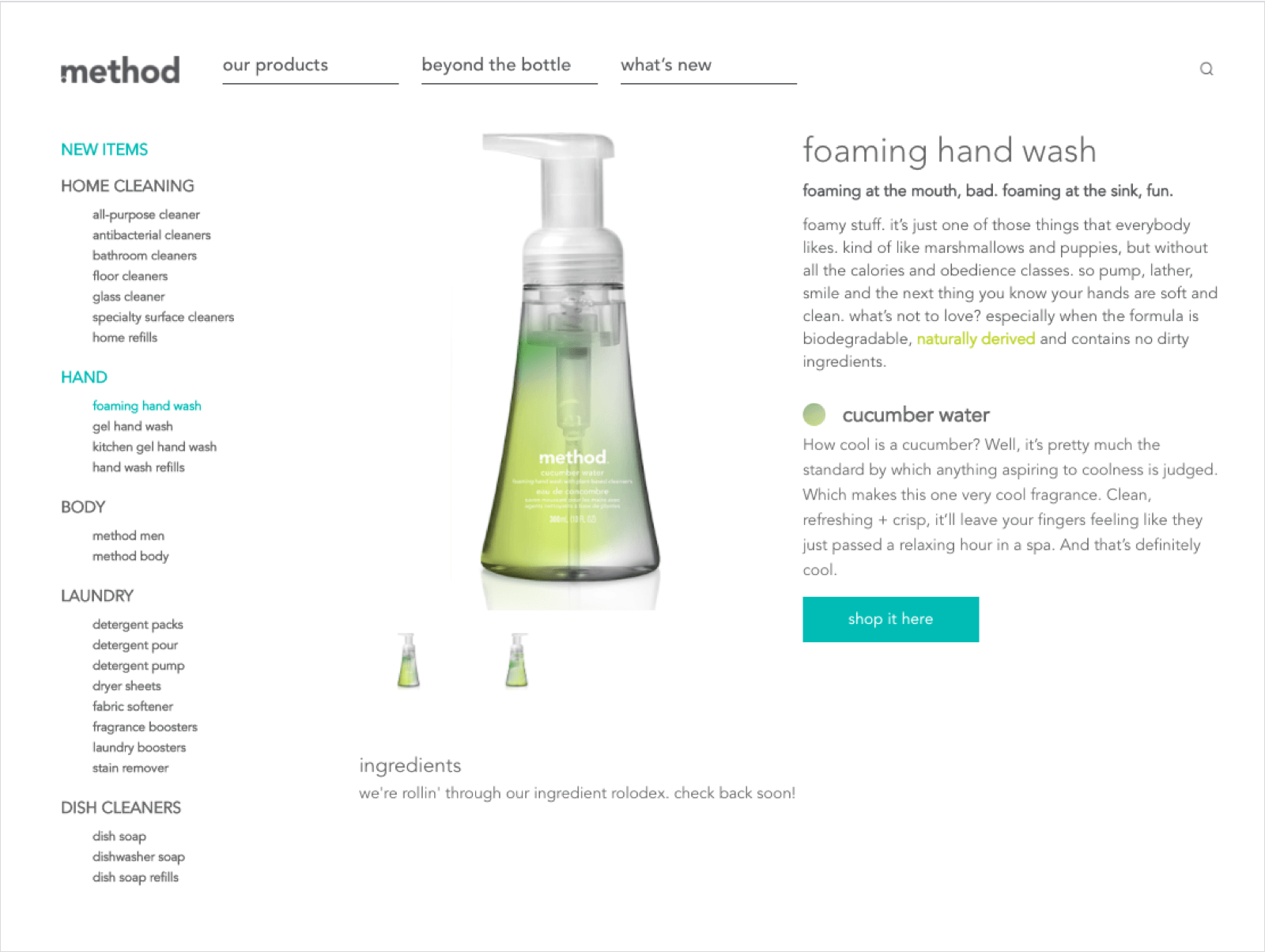
Method’s voice is cute and quirky, but accessible. You could picture an actual person saying those things because the language sounds very natural. Method knows how to connect with their customers, and their voice is consistent across their website and through all of their channels.
Remember that every consumer that comes to your store is an individual person. Speak directly to each one, in a voice they can relate to.
Make an emotional connection
If you can connect with a customer on an emotional level, you can sell to them. You can do this by sharing positive emotions — like providing an uplifting story about a product’s origins — or providing consumers solutions to deal with negative ones.
Goop gets a lot of eye rolls for their questionable wellness claims and expensive products, but where they really excel is in writing product descriptions. Take this one, for example:
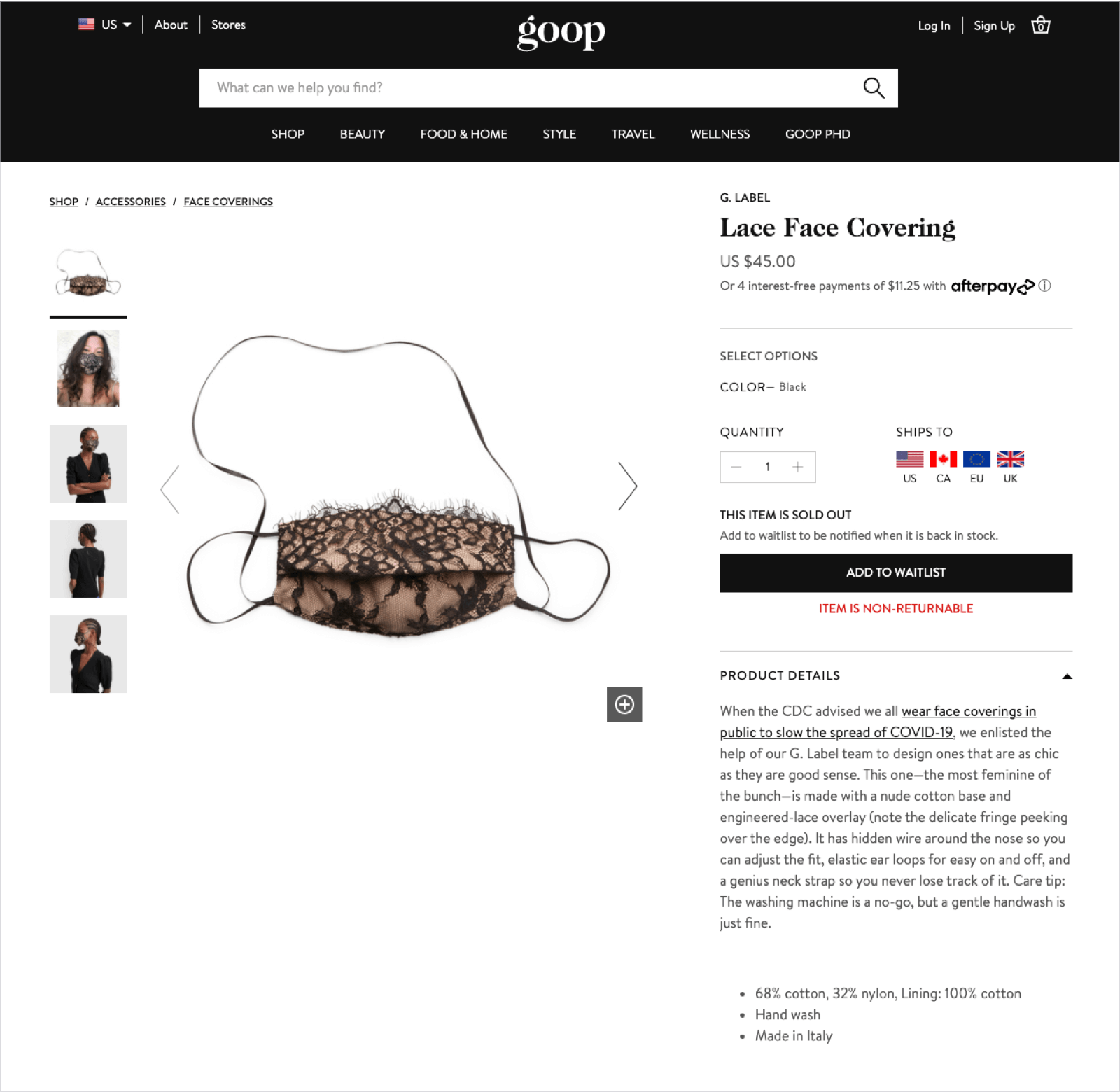
Goop has successfully tapped into the fact that no one likes wearing face masks. They can be uncomfortable, they hide our faces, and they aren’t attractive. By appealing to how masks make consumers feel and then offering a solution — a mask that can potentially make you feel good about wearing it — they are making an emotional connection. That $45 mask, by the way, is sold out.
Words that sell
We’ve already talked about the power of “you” and “your,” but there are some other words you should have in your copywriting arsenal, because they are proven to drive engagement and conversions.
Sensory words
Sensory words stimulate our senses of taste, touch, smell, sight, and hearing. They are especially important when it comes to shopping online, where a customer can’t hold your products in their hand and experience them in a retail environment. See this example from Godiva:
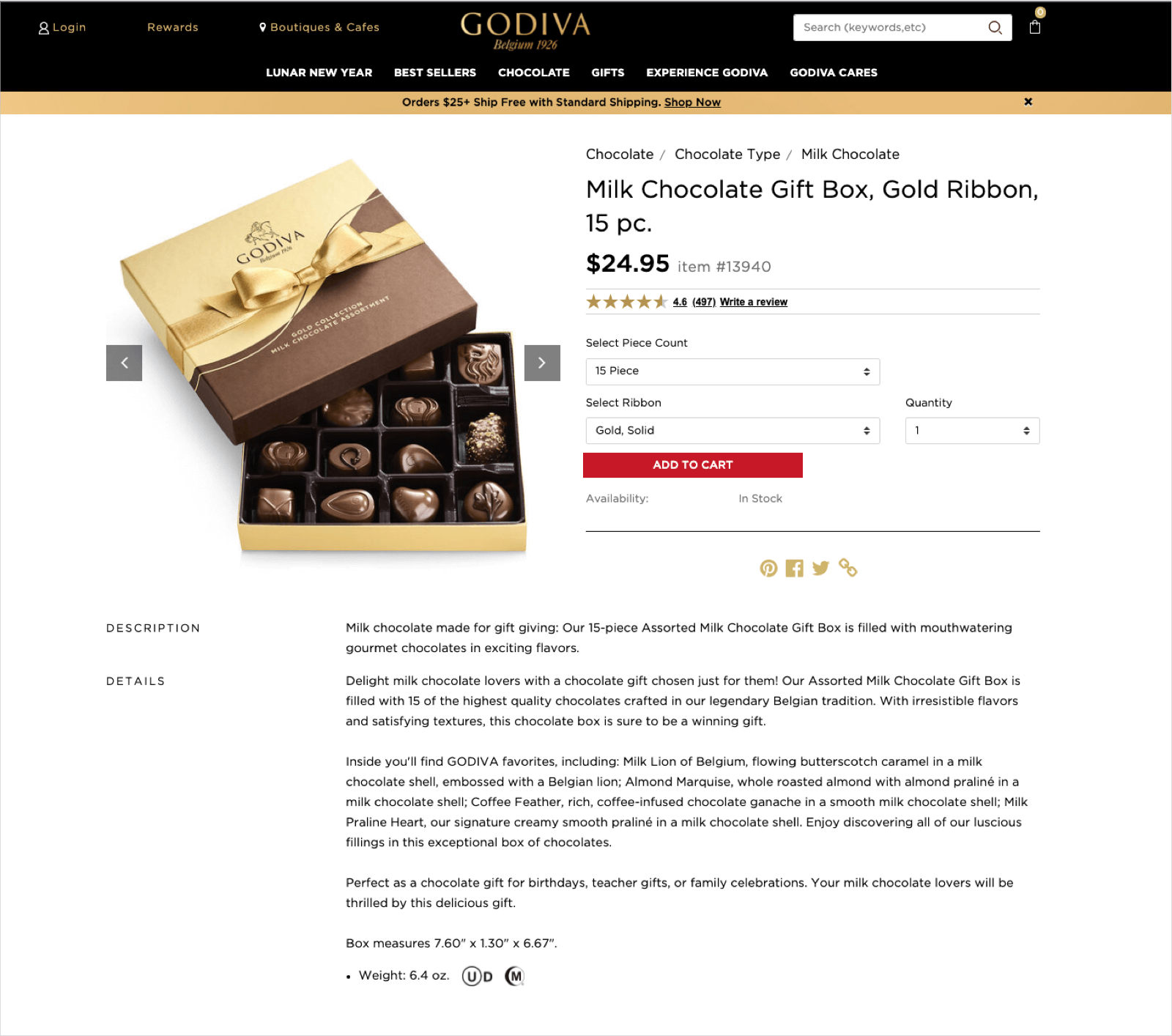
Look at all of the sensory words packed into that description!
- Sweet
- Savory
- Spicy
- Light
- Airy
- Rich
- Delectable
If you’re in the mood for chocolate and read that description, you’re sold. Sensory words and food brands are a match made in heaven, but many products can benefit from them. Fabrics can be velvety; pillows are fluffy; candles are holiday-scented. Any words that can tap into a consumer’s senses can make them connect with the product.
Persuasive or “power” words
Advertising legend David Ogilvy had a famous list of the 20 most persuasive words in the English language. They were:
- Suddenly
- Now
- Announcing
- Introducing
- Improvement
- Amazing
- Sensational
- Remarkable
- Revolutionary
- Startling
- Miracle
- Magic
- Offer
- Quick
- Easy
- Wanted
- Challenge
- Compare
- Bargain
- Hurry
What all of those words have in common is that they elicit an emotional response, whether it’s curiosity, wonder, or FOMO. Instead of trying to work these specific words into your copy, focus on the emotional response you want to generate, and then use this list as a guide. For example, “magic” might feel like a stretch, but “remarkable” might work just fine.
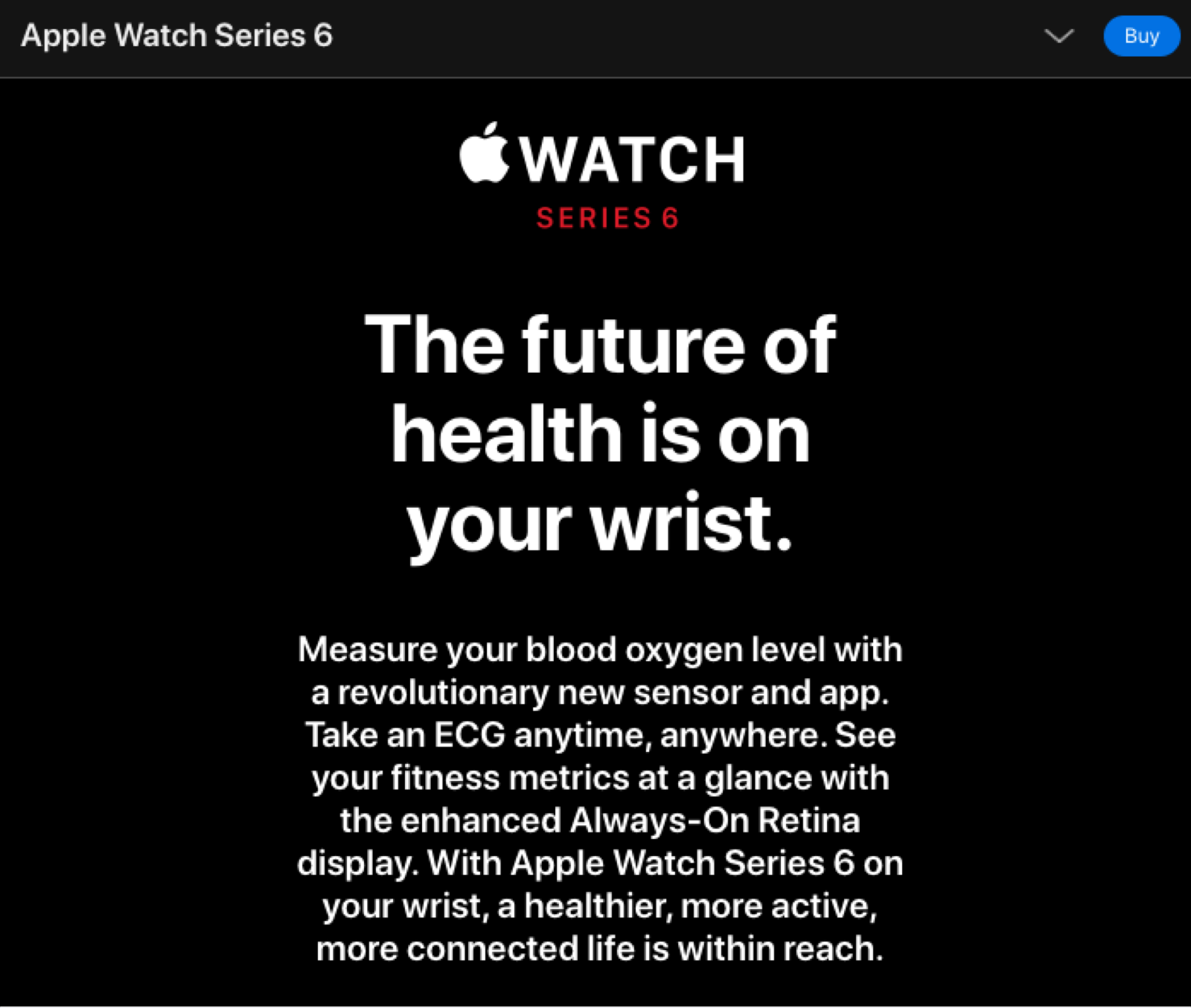
Apple’s product description for the Apple Watch Series 6 makes use of one of Ogilvy’s persuasive words, “revolutionary.” “The future of” is also a very powerful phrase that makes the consumer feel that they are going to be one of the first people to try something new. And the last sentence is designed to make the consumer feel that if they want to be healthy and active, they need an Apple Watch. It’s effective messaging.
Conclusion
With the right words, you can turn your product pages into effective sales vehicles. By focusing on who you’re speaking to, how you’re speaking to them, and what you want them to feel, you’ll be able to put together a solid copywriting strategy.














